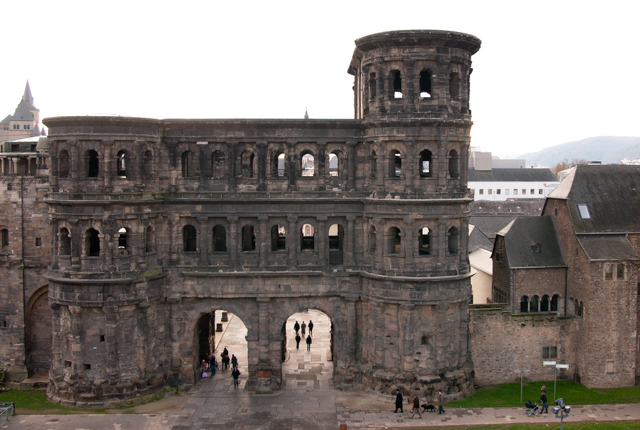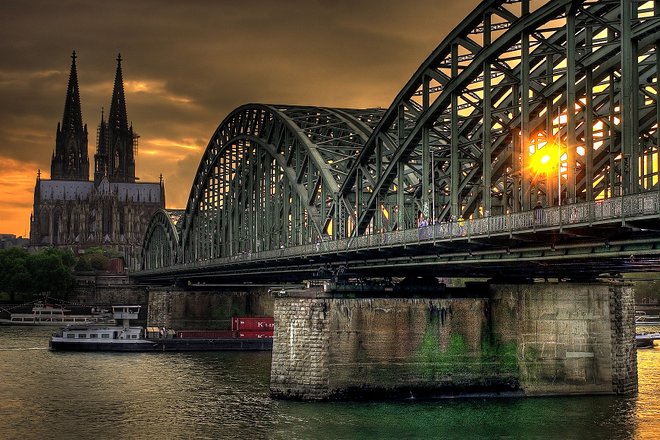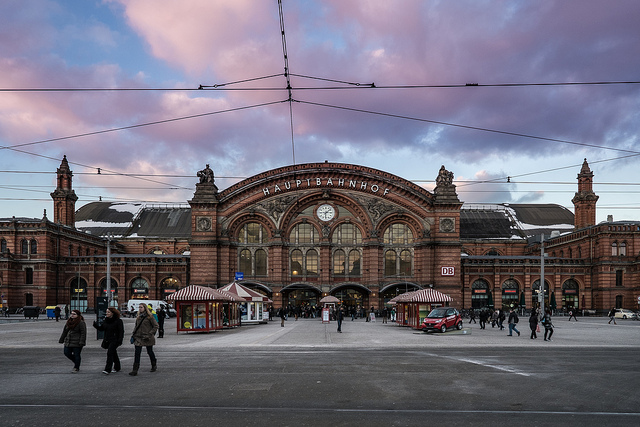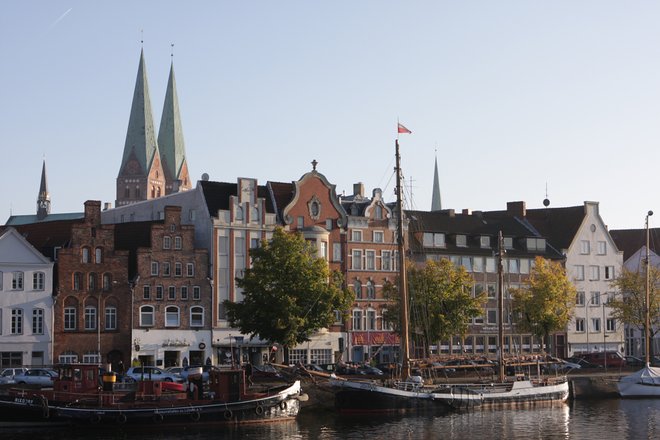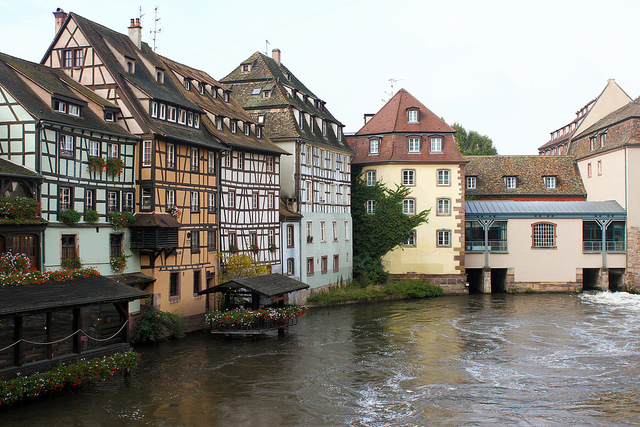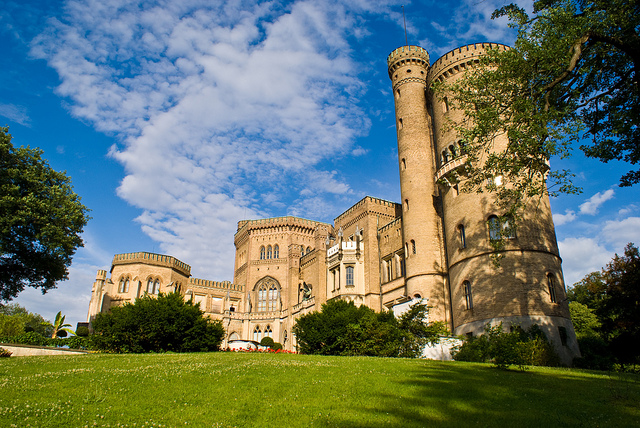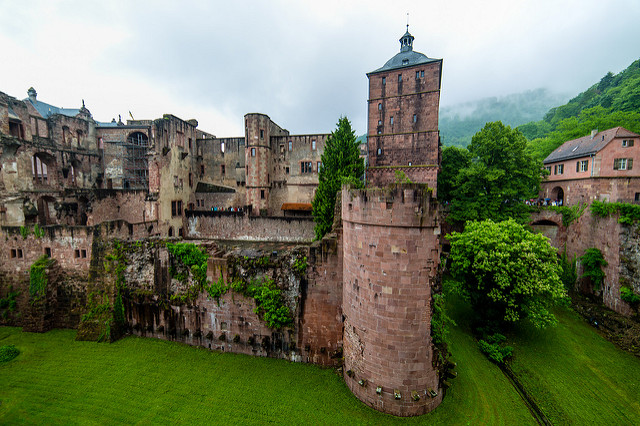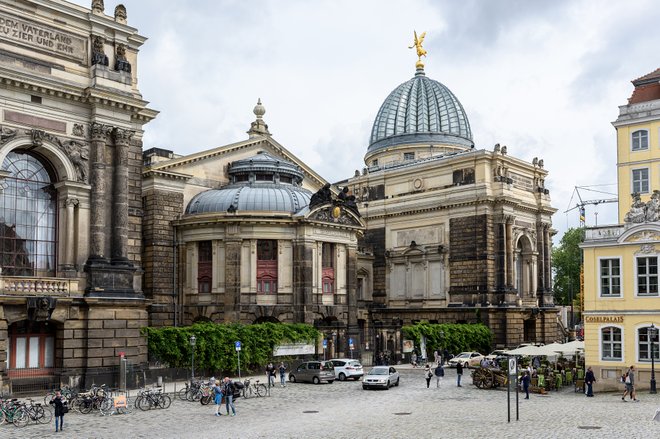Americans are traveling abroad in record numbers. According to data from the National Travel and Tourism Office, Germany is the seventh most popular overseas destination for Americans. Even though it's one of the largest European countries in terms of both area and population, two cities tend to steal the show: Munich and Berlin. We propose going off the beaten track and exploring beyond these two tourist hubs. Check out our list of Deutschland's lesser-known highlights to get a sense of the country's full range of wonders. There are under-the-radar cities, historic towns, quaint villages, and incredible natural beauty all begging to be explored. Find your new favorite undiscovered gem.
Notice: Undefined offset: 4 in /nas/content/live/stagingstmllc/wp-content/plugins/smartertravel-shared/includes/ads/includes/api.php on line 92
Notice: Undefined offset: 5 in /nas/content/live/stagingstmllc/wp-content/plugins/smartertravel-shared/includes/ads/includes/api.php on line 92
Notice: Undefined offset: 6 in /nas/content/live/stagingstmllc/wp-content/plugins/smartertravel-shared/includes/ads/includes/api.php on line 92
Notice: Undefined offset: 4 in /nas/content/live/stagingstmllc/wp-content/plugins/smartertravel-shared/includes/ads/includes/api.php on line 98
Notice: Undefined index: pass_through_args in /nas/content/live/stagingstmllc/wp-content/plugins/smartertravel-shared/includes/ads/includes/api.php on line 158
Notice: Undefined index: wrapper in /nas/content/live/stagingstmllc/wp-content/plugins/smartertravel-shared/includes/ads/includes/api.php on line 159
Notice: Undefined offset: 4 in /nas/content/live/stagingstmllc/wp-content/plugins/smartertravel-shared/includes/ads/includes/api.php on line 92
Notice: Undefined offset: 5 in /nas/content/live/stagingstmllc/wp-content/plugins/smartertravel-shared/includes/ads/includes/api.php on line 92
Notice: Undefined offset: 6 in /nas/content/live/stagingstmllc/wp-content/plugins/smartertravel-shared/includes/ads/includes/api.php on line 92
Notice: Undefined offset: 4 in /nas/content/live/stagingstmllc/wp-content/plugins/smartertravel-shared/includes/ads/includes/api.php on line 98
Notice: Undefined index: pass_through_args in /nas/content/live/stagingstmllc/wp-content/plugins/smartertravel-shared/includes/ads/includes/api.php on line 158
Notice: Undefined index: wrapper in /nas/content/live/stagingstmllc/wp-content/plugins/smartertravel-shared/includes/ads/includes/api.php on line 159
Notice: Undefined offset: 4 in /nas/content/live/stagingstmllc/wp-content/plugins/smartertravel-shared/includes/ads/includes/api.php on line 92
Notice: Undefined offset: 5 in /nas/content/live/stagingstmllc/wp-content/plugins/smartertravel-shared/includes/ads/includes/api.php on line 92
Notice: Undefined offset: 6 in /nas/content/live/stagingstmllc/wp-content/plugins/smartertravel-shared/includes/ads/includes/api.php on line 92
Notice: Undefined offset: 4 in /nas/content/live/stagingstmllc/wp-content/plugins/smartertravel-shared/includes/ads/includes/api.php on line 98
Notice: Undefined index: pass_through_args in /nas/content/live/stagingstmllc/wp-content/plugins/smartertravel-shared/includes/ads/includes/api.php on line 158
Notice: Undefined index: wrapper in /nas/content/live/stagingstmllc/wp-content/plugins/smartertravel-shared/includes/ads/includes/api.php on line 159
1. Trier
Nestled near the Luxembourg border in the southwest part of the country, Trier is Germany’s oldest city. Founded by the Romans, Trier was known as Augusta Treverorum for 500 years. It was a favorite among rulers and was used as a capital several times. As you might imagine, the Roman architecture on display here is stellar. Be sure to visit Porta Nigra, one of the best-preserved ancient city gates in the world. Folks can also check out the ruins of an amphitheater, three Roman baths, and the original Roman court. Plus, Trier is home to the oldest cathedral in the country and an elaborate basilica, which is the largest intact Roman structure outside of Rome. However, Trier isn’t all old buildings and former grandeur. Thanks to a bustling market and youthful population, the city feels remarkably young for its age. Leave time to wander the fruit stands, flower stalls, and charming cafes. Even better, Trier is located in the Moselle wine region, so you can imbibe some local blends while soaking up the city’s historic significance.
2. Cologne
You’ve likely heard of Cologne, but have you taken the time to explore it? With a population just over one million, the city is hardly quaint, but it retains incredible charm for its size. Cologne was also founded by the Romans and its architecture reflects various time periods in its long history (think Roman towers, Gothic cathedrals, colorful, 19th-century row houses, and a modern hotel). The narrow cobblestone alleys and plentiful small squares make you feel like you’re discovering something new every day. Every corner offers a new shop, cafe, or bookstore. The most famous spot, though, is the UNESCO-protected Cologne Cathedral (or Kölner Dom). The towers stand over 500 feet tall, and thanks to dreary weather, they often seem to disappear into the clouds. The cathedral took 600 years to complete, survived multiple bombings during World War II, and houses the bones of the Three Kings (wise men who brought gifts of gold, frankincense, and myrrh for baby Jesus). Other highlights include the Warhol- and Picasso-filled Ludwig Museum, Wallraf-Richartz Museum, and Skulpturen Park. When all the art and architecture stirs your appetite, head to the riverside Imhoff-Schokoladen Museum. You’ll want to finish each night with a fresh pint of Kölsch beer.
3. Bremen
The northern city of Bremen looks straight out of a medieval fairytale. In fact, it is the backdrop for one of the Grimm brothers’ famous stories. The “Town Musicians of Bremen” was first published in 1819 and tells the story of a donkey, dog, cat, and rooster who leave domestic life in search of something better. According to legend, they never made it to Bremen, but they did make street musicians the trademark of the city. You’ll want to check out the statue dedicated to the foursome beside Town Hall. It’s second only to the giant Roland statue, which symbolizes the freedom of trade. Town Hall and Roland on the Marketplace have enjoyed UNESCO World Heritage status since 2004. Allocate some time in the little lanes of Schnoor Quarter, too, which was traditionally home to the fishing community. Most of the city’s attractions are packed into the Old Town (Haus des Glockenspiels is one favorite). Tip: The city is especially magical in late November or December when the Christmas market is up.
4. Lübeck
Along the Trave River and near the Baltic Sea lies the northern port city of Lübeck. It’s known as both the birthplace of marzipan and a medieval masterpiece. Only a 45-minute train ride from Hamburg, many visitors consider it for a day trip. It was once the leading city of the powerful Hanseatic League, meaning it was able to trade freely without incurring tax. And though most of the residential neighborhoods suffered major bombing during WWII, the old town was largely preserved. There are seven Gothic-style churches dotted throughout the city, and all of Lübeck is surrounded by city walls and gates. Most iconic are the round towers of the Holstentor, a city gate that defended the old town. They now host a museum about trade, power, and wealth in the region. Though once a city exclusively for rich merchants, the city offers fun for tourists on any budget. You’ll see the new next to the old, all while enjoying the seaside. Pay special attention at sunset, when the red brick buildings take on a magical glow.
5. Freiburg im Breisgau
For the perfect combination of cosmopolitan and wild, pack your bags for the lively city of Freiburg im Breisgau. The nearby university and multiple medieval attractions make for a busy center. Plus, it acts as an entrance to Germany’s mythical Black Forest. The city is full of bächle (picturesque mini canals of fresh river runoff). It doesn’t hurt that Frieburg is also the sunniest place in the country. Known for its use of solar power and lack of cars, it’s even one of the greenest cities in the world. And thanks to its proximity to France, the local grub is top-notch. The city is perfect for a day trip from Stuttgart, Munich, or Zurich, but there’s enough to keep visitors busy for a three-day trip. Head to the Münsterplatz market first, where both fresh produce and artisan wares are up for sale. Next, explore the city’s cathedral. The view from the top of its 380-foot tower is unmatched. The Martinstor and Schwabentor gates are other must-sees. If you have time, plan a hike in the mountains. There’s a funicular that goes directly to the famed Schlossberg hill trails.
6. Potsdam
Just 20 miles outside of Berlin, Potsdam is a tranquil escape from the bustle of city life. Prussian kings like Frederick William I and his son, Frederick the Great, were determined to create the most beautiful royal center in Europe. There are 17 magnificent palaces here, each surrounded by impressive gardens. Leave plenty of time to uncover all that pomp and circumstance, especially Frederick the Great’s summer palace. This yellow Rococo building is impossible to miss and the interior is just as ornate as you’d imagine. It was used as a retreat from royal responsibilities, earning its name Sanssouci (without worry). The Tudor-style Schloss Cecilienhof palace, occupied by the last members of the German royal family, is also worth a stop. It served as a key site for World War II closing negotiations. Movie buffs will also appreciate a tour at Filmpark Babelsberg, Germany’s Hollywood equivalent. It’s responsible for golden age films like “Metropolis” as well as partially for modern masterpieces like “V for Vendetta,” “The Grand Budapest Hotel,” and “Inglourious Basterds.” Potsdam is also home to a quaint Dutch Quarter full of laid-back cafes and avant-garde galleries, plus a small Russian colony known as Alexandrowka. And no visit to Potsdam would be complete without a steamboat ride on the River Havel.
7. Heidelberg
Romantic-period poets, painters, and philosophers all found inspiration in Heidelberg. When you walk the town’s cobblestone streets and colorful alleyways, you’ll understand why. Even American great Mark Twain spent a few years in the city to overcome writer’s block, and his adventures there sparked both “A Tramp Abroad” and “Adventures of Huckleberry Finn.” Heidelberg is also home to the ruins of a stunning 13th-century castle and Germany’s oldest university. Many of the Forty-Eighter revolutionaries that fought for German unification, a more democratic government, and human rights were recruited on campus. Heidelberg University has maintained its reputation as one of the world’s top institutions. The Baroque architecture of Old Town and strategic location along the river make it an attractive choice for students and tourists alike. You’ll likely spend most of your visit along the mile-long main drag, Hauptstrasse. Walk across the historic Alte Brücke bridge, which connects two sides of the city (Altstadt and the Neuenheim) across the Neckar River. (It was once the main entrance to the city.) The endangered species-filled city zoo, apothecary-focused Pharmacy Museum, and Church of the Holy Spirit are also worth some time. The Hercules fountain in Marktplatz, where petty criminals were chained during medieval times, and Studentenkarzer, the university jail where students were placed for bad or drunken behavior, are also worth a visit.
8. Dresden
Although it was almost completely destroyed by WWII bombing, Dresden was largely ignored during the Communist regime and has resurrected greater than ever. The reconstruction reflects the original magnificence travelers would have enjoyed in the Saxony capital a hundred years ago, while also offering some new attractions worth visiting (picture open-air breweries reached by historic steamboats). The city is often referred to as the “Florence on the Elbe” because of its location along the banks of the Elbe River near the Czech border. Like Florence, Dresden is filled with classy culture. Renaissance, Baroque, and Neoclassical architecture await on every corner and it’s home to an inequitable amount of Germany’s artistic treasures. Zwinger Palace, Gemäldegalerie Alte Meister, Grünes Gewölbe, and Albertinum all offer a peek. But there’s magic for your ears, too. Visitors should plan a visit to one of Dresden’s many historic concert halls, like the Semperoper opera house. Churches like the pink-and-white Frauenkirche and Italian-style Dresden Cathedral demand attention as well. If the bombastic beauty of the Altstadt (Old Town) gets overwhelming, head to the gritty Neustadt (New Town), which offers street art and a more lively night scene.
You’ll Also Like:
- The Most Underrated Places to Go in 2018
- Where to Celebrate Oktoberfest Around the World
- 9 of the Most Beautiful Places in Europe
All products are independently selected by our writers and editors. If you buy something through our links, Oyster may earn an affiliate commission.
